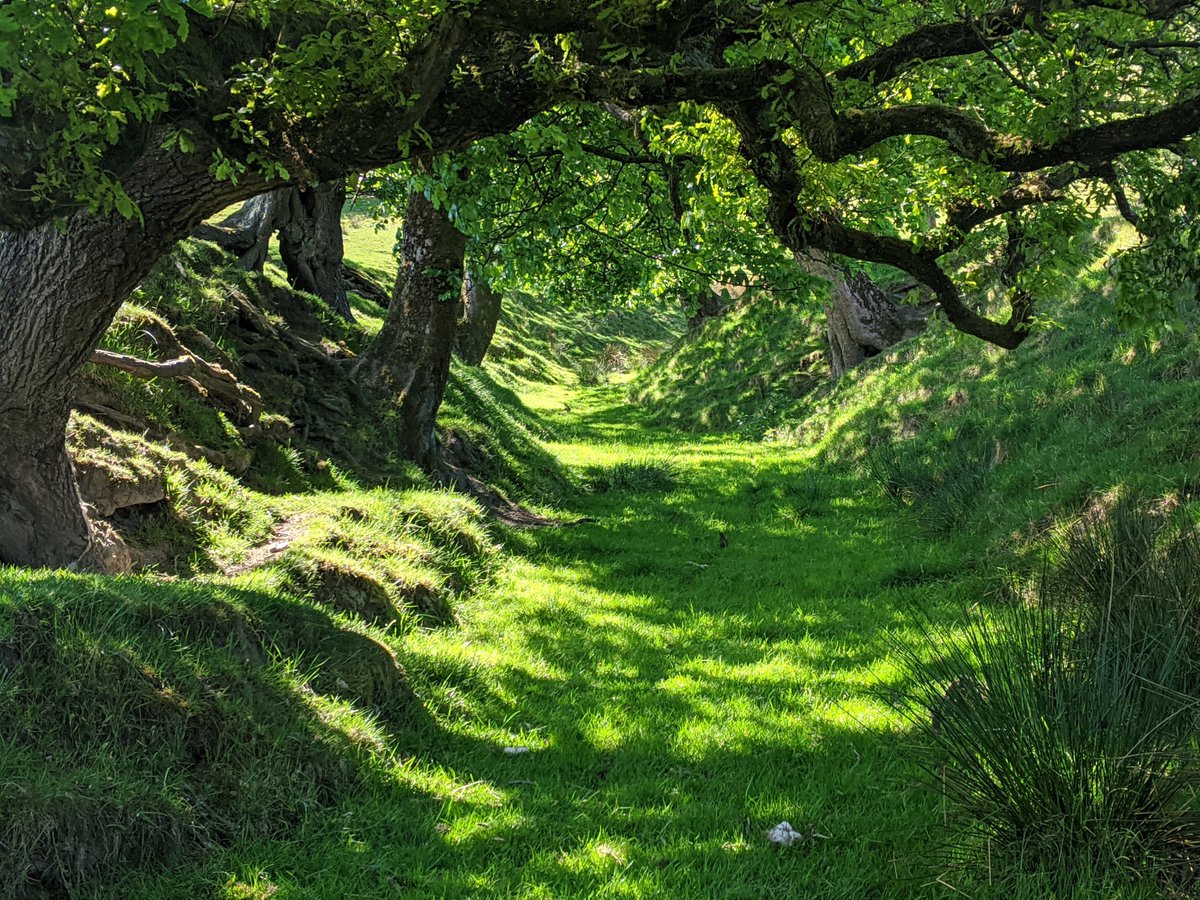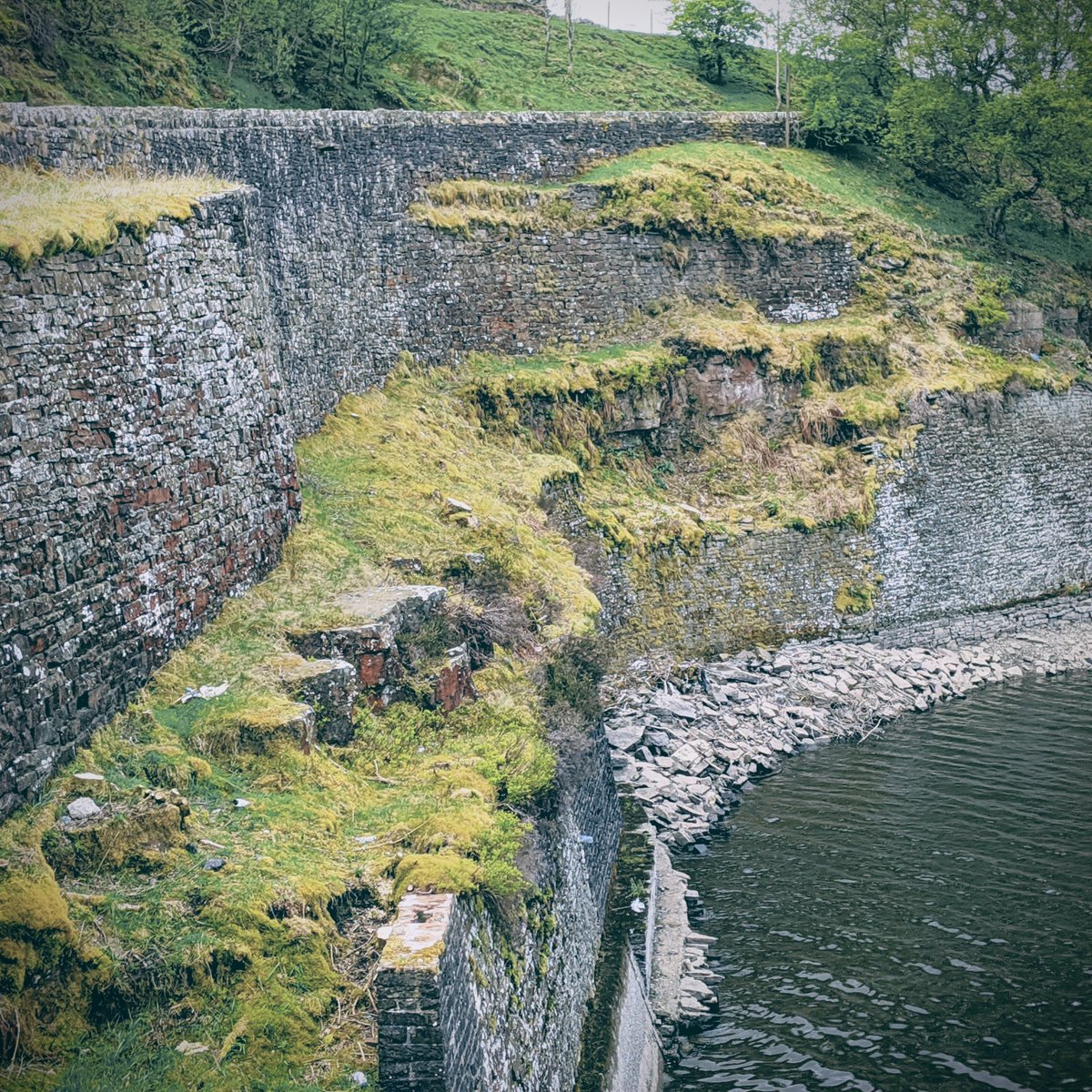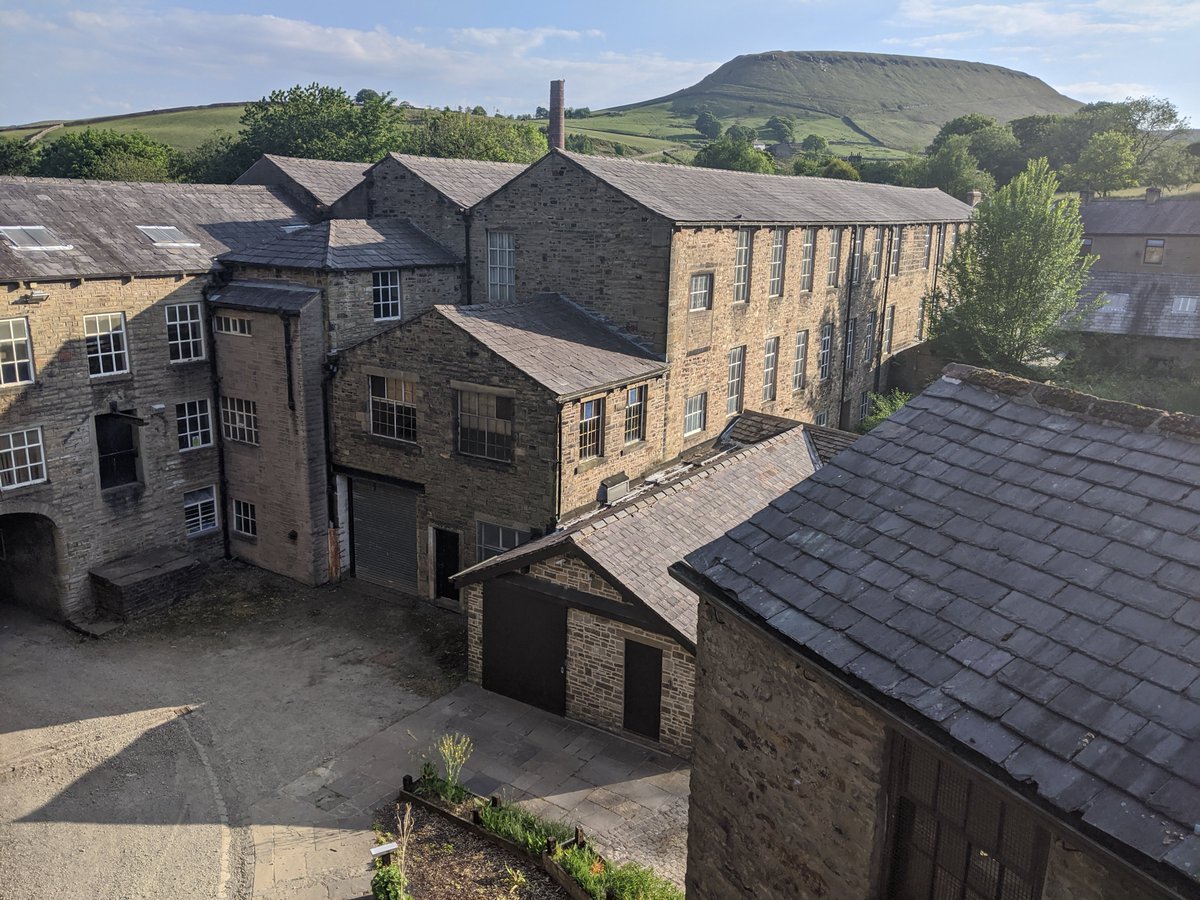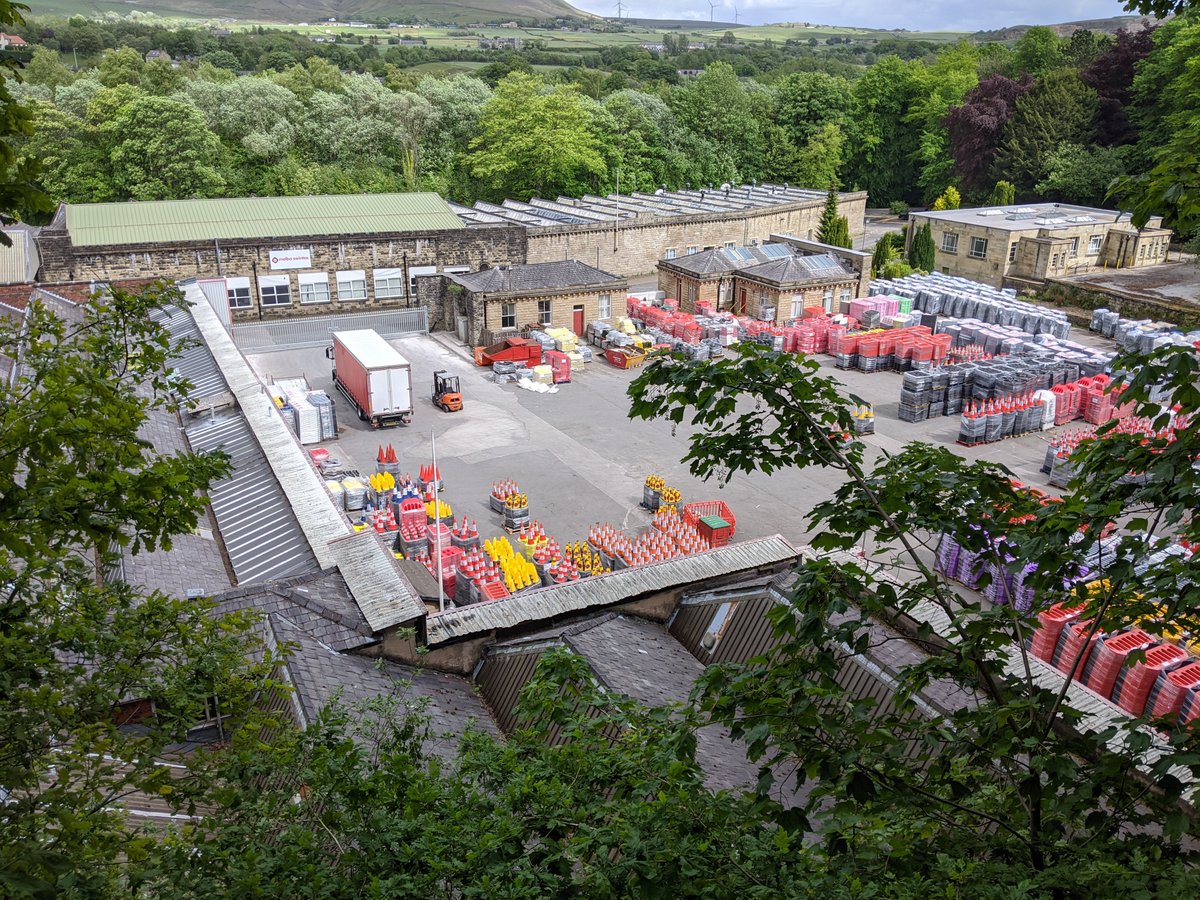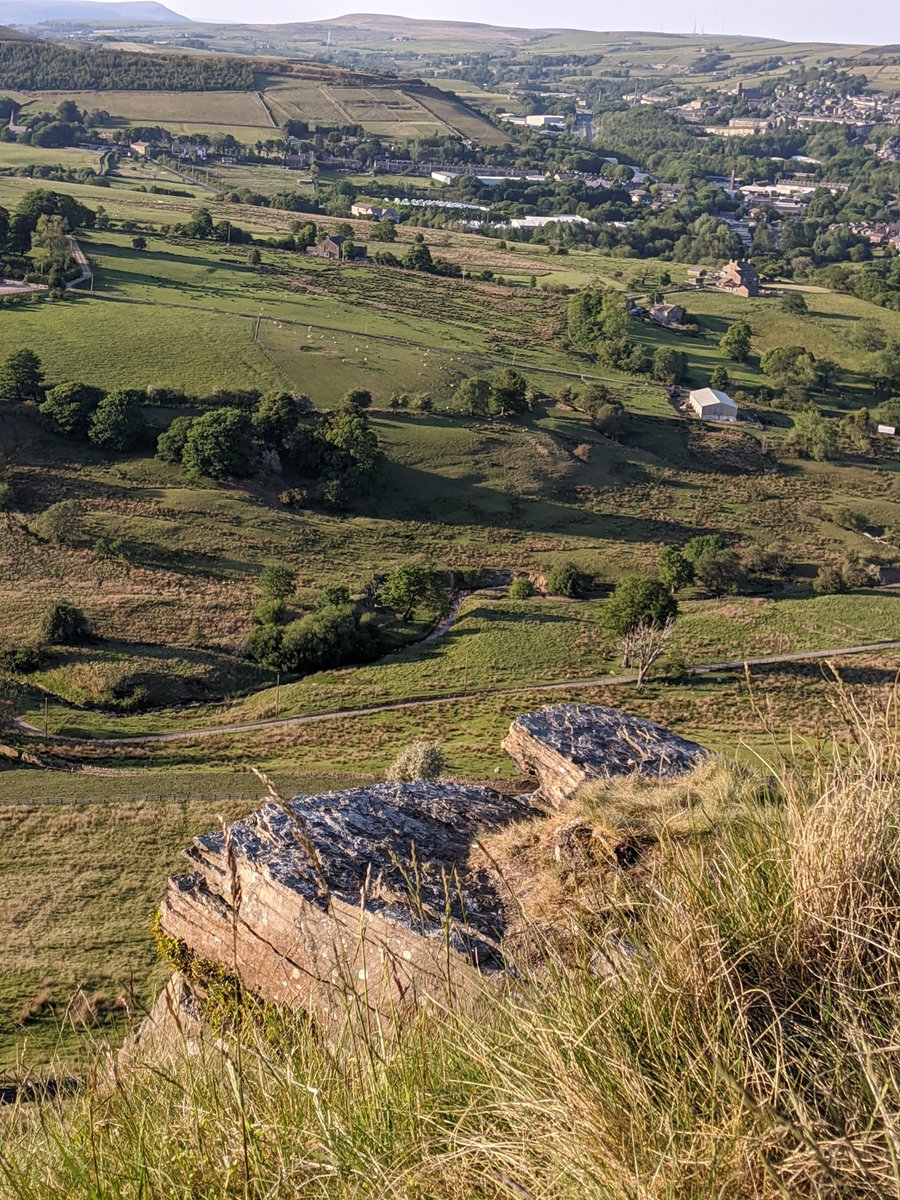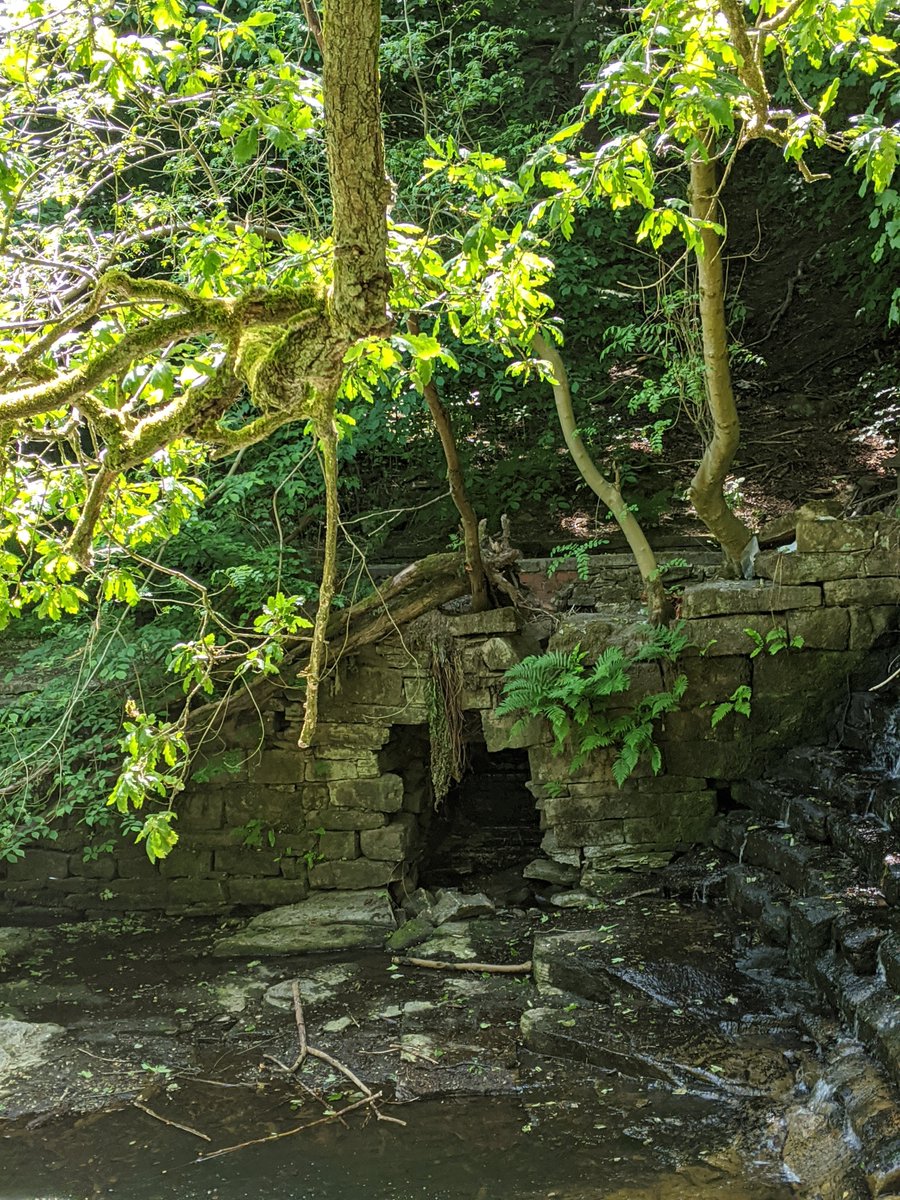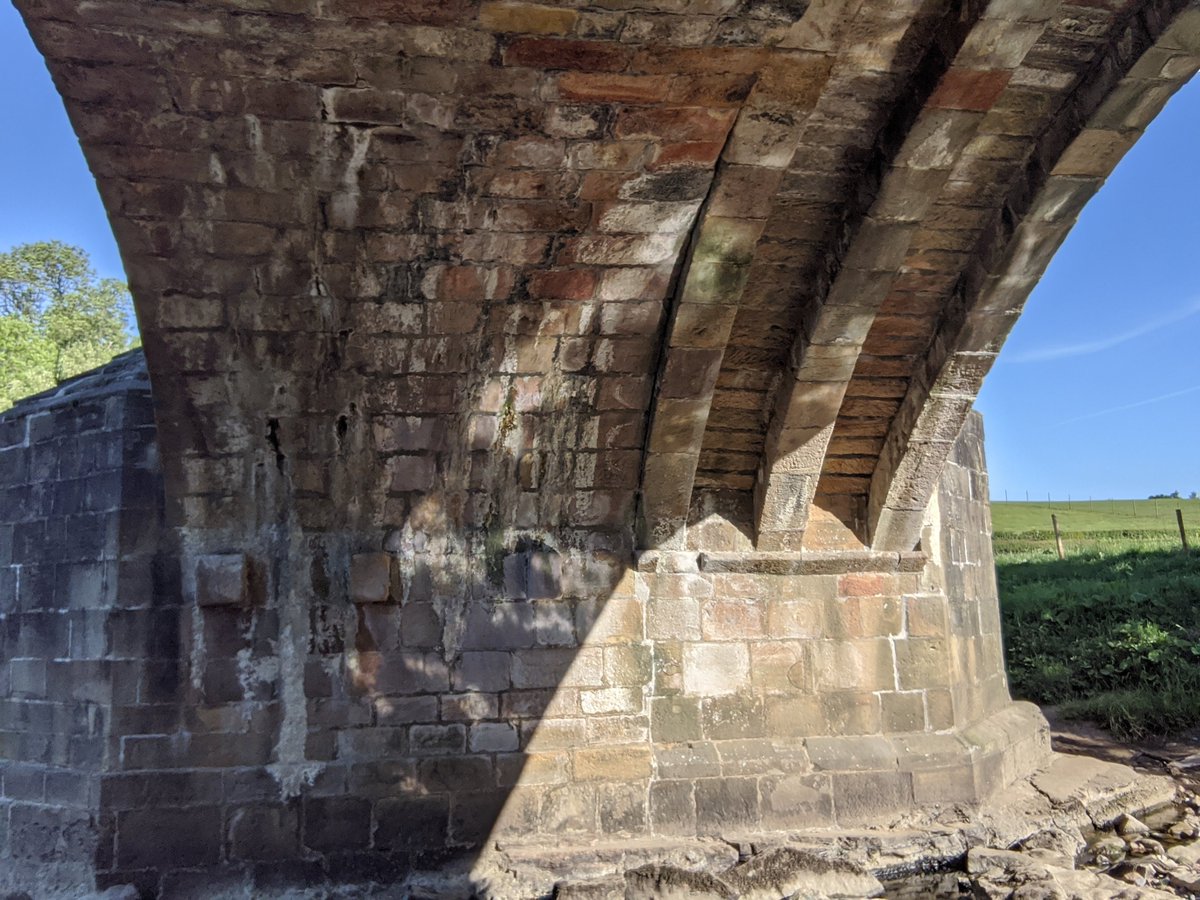Gonna make a thread of fun #leveldesign tips that I have noticed while on walks over the last couple of weeks.
Please add your own bellow too :)
1) Even in a purely natural environment you can still lead the player with paths and portals. This is a dried up river bed :)
Please add your own bellow too :)
1) Even in a purely natural environment you can still lead the player with paths and portals. This is a dried up river bed :)
2) You can clearly differentiate between walkable surfaces and non-walkable surfaces by building them from a different material or colour.
Grass can't grow on steep surfaces so it can be used to identify walkable terrain. :)
Grass can't grow on steep surfaces so it can be used to identify walkable terrain. :)
3) Entering a space from a high vantage point allows a player mentally map the area and form a plan before diving in.
This is especially useful if the space contains combat. Players can become disorientated and overwhelmed in the combat so allowing room before hand can help :)
This is especially useful if the space contains combat. Players can become disorientated and overwhelmed in the combat so allowing room before hand can help :)
4) Natural terrain communicates it's boundaries less clearly than man made structures. There is not always a fence or wall to stop you falling off a steep drop.
Line a cliff edge with rocky outcrops to form a natural parimeter and make the edge more visible to a player.
Line a cliff edge with rocky outcrops to form a natural parimeter and make the edge more visible to a player.
5) A puzzle should not be in working out what to do, but in how to do it.
Here the small cave entrance is very visible to the player, but it is inaccessible on the other side of a river.
The goal is clear, but the solution is not. That's a good puzzle set up :)
Here the small cave entrance is very visible to the player, but it is inaccessible on the other side of a river.
The goal is clear, but the solution is not. That's a good puzzle set up :)
6) Tell a story with your environment.
This bridge was originally quiet narrow, but was widened to accommodate modern cars. Underneath you can see the old part and the new part are built in totally different styles.
I have no idea which is the old part :)
This bridge was originally quiet narrow, but was widened to accommodate modern cars. Underneath you can see the old part and the new part are built in totally different styles.
I have no idea which is the old part :)
7) The illusion of choice.
Linear levels can feel artificial & contrived but very wide levels are impractical & expensive to build. Compromise by building multiple routs through an area. Knowing that there were routs that a player didn't take makes the space feel much larger. :)
Linear levels can feel artificial & contrived but very wide levels are impractical & expensive to build. Compromise by building multiple routs through an area. Knowing that there were routs that a player didn't take makes the space feel much larger. :)
Obvs, this pic is a terrible example of this. It just made me laugh that there were 3 paths parrallel to each other, and it made me think of inconsequential choice in games :)
8) Outdoor interiors
Even if your level is set entirely outdoors, it doesn't have to feel like one large exterior space. Trees create a natural canopy which can make a space feel smaller, darker, quieter, and colder. Because of this I always think of woods as interior spaces.
Even if your level is set entirely outdoors, it doesn't have to feel like one large exterior space. Trees create a natural canopy which can make a space feel smaller, darker, quieter, and colder. Because of this I always think of woods as interior spaces.
9) Movement & Sound
Movement and sound are great ways to attract the players attention. Any flowing water provide both of these for free. It's a bit amazing how noisy a tiny stream can be. Use this to attract the player to where you want them to be :)
Movement and sound are great ways to attract the players attention. Any flowing water provide both of these for free. It's a bit amazing how noisy a tiny stream can be. Use this to attract the player to where you want them to be :)
10) Handholds
If your player can climb it can be tempting to stick handholds onto a surface to make them stand out but can blend in at a distance. Cracks in a rockface or missing bricks in a wall create deep shadows that are very visible & more integrated into the environment.
If your player can climb it can be tempting to stick handholds onto a surface to make them stand out but can blend in at a distance. Cracks in a rockface or missing bricks in a wall create deep shadows that are very visible & more integrated into the environment.
11) Shapes and patterns
Our brains are very good at identifying shapes and patterns. These will stand out even more in a natural environment where you would not expect to find them.
I'm certain there is a small circular rock nearby that would fit perfectly in that hollow. :)
Our brains are very good at identifying shapes and patterns. These will stand out even more in a natural environment where you would not expect to find them.
I'm certain there is a small circular rock nearby that would fit perfectly in that hollow. :)
13) Silhouette
Shapes can be difficult to read when set against a similarly couloured and lit backdrop. One way to give an object or landmark a better chance of standing out is to silhouette it against the sky.
Shapes can be difficult to read when set against a similarly couloured and lit backdrop. One way to give an object or landmark a better chance of standing out is to silhouette it against the sky.
14) Atmospherics
You can use atmospherics in a scene to help convey depth. The further away an object is the more obscured it will be, providing useful depth cues to the player. Also, by obscuring the background you are going to draw focus to the foreground.
You can use atmospherics in a scene to help convey depth. The further away an object is the more obscured it will be, providing useful depth cues to the player. Also, by obscuring the background you are going to draw focus to the foreground.
15) Improvised path
This pipeline looks like a bridge. It wasn't designed as a bridge, but could be used as one.
Letting players use elements in ways they were not intended for can make them feel resourceful & adevnturouse because you are disregarding the intended use. :)
This pipeline looks like a bridge. It wasn't designed as a bridge, but could be used as one.
Letting players use elements in ways they were not intended for can make them feel resourceful & adevnturouse because you are disregarding the intended use. :)
16) Leading steps
Certain human structures are very good at communicating their function & in doing so invite players to use them as such. Door ways and windows invite players to move or look through them.
Here, these steps invite the player to explore up the hill. :)
Certain human structures are very good at communicating their function & in doing so invite players to use them as such. Door ways and windows invite players to move or look through them.
Here, these steps invite the player to explore up the hill. :)
17) Trespass (not in real life)
Nothing will attract the player more than a visible path paired with a sign warning the player not to use it. Knowing you are somewhere you shouldn't be adds an extra layer of tension & excitement.
P.S. don't do this in real life :)
Nothing will attract the player more than a visible path paired with a sign warning the player not to use it. Knowing you are somewhere you shouldn't be adds an extra layer of tension & excitement.
P.S. don't do this in real life :)
18) Landmarks
Use highly visible landmarks to help orient or guide players.
Landmarks are great at leading players to a location, but can also be helpful to orient a player that is just exploring aimlessly.
These wind farms were a constant reminder that we weren't TOO lost :)
Use highly visible landmarks to help orient or guide players.
Landmarks are great at leading players to a location, but can also be helpful to orient a player that is just exploring aimlessly.
These wind farms were a constant reminder that we weren't TOO lost :)
19) Follow the Flow
I imagine players flowing through a space as if they are water. They have forward momentum and often follow the path of least resistance.
Place geometry to guide and alter the flow of their path.
Pic: This path just turned into a river in a downpour
I imagine players flowing through a space as if they are water. They have forward momentum and often follow the path of least resistance.
Place geometry to guide and alter the flow of their path.
Pic: This path just turned into a river in a downpour

20) Geometric Repetition
Use repetitive geometry to allow the player the opportunity to predict what is coming next.
The repeting shape of this arch tells the player that there must be a space to explore under the third arch even though it is hidden behind a bush.
Use repetitive geometry to allow the player the opportunity to predict what is coming next.
The repeting shape of this arch tells the player that there must be a space to explore under the third arch even though it is hidden behind a bush.
21) Object Trees Vs Shape Trees
Some trees block players and force them to navigate around them. They are viewed as objects and remove usable space.
Some trees allow the player to pass underneath them. They create space beneath their high branches which a player can inhabit :)
Some trees block players and force them to navigate around them. They are viewed as objects and remove usable space.
Some trees allow the player to pass underneath them. They create space beneath their high branches which a player can inhabit :)

 Read on Twitter
Read on Twitter